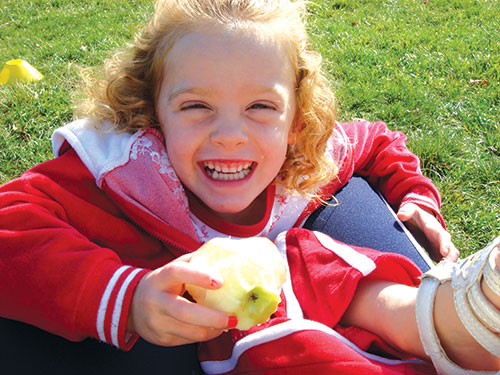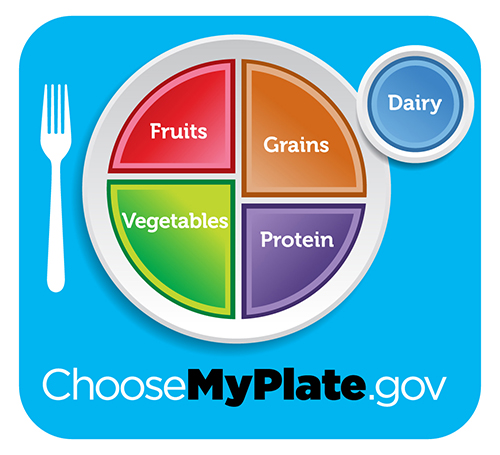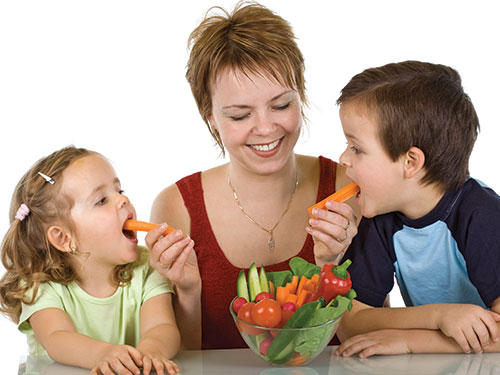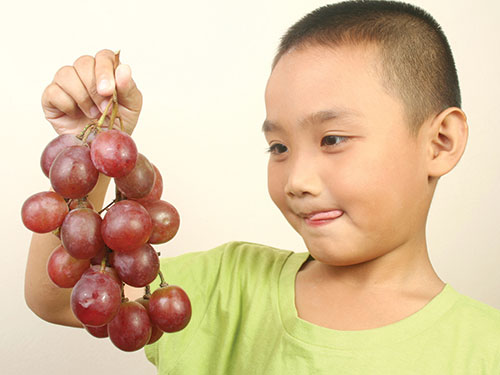
Fact Sheet FS947
Kids love to snack, and that’s a good thing. Snacks are an important part of a growing child’s diet. Because their stomachs are small, children don’t always meet their nutritional needs with just three meals a day. Combine healthy snacks and nutritious meals to give children the nutrients they need for growth and development. Healthy eating habits are best formed during childhood. By teaching—and showing—children how to select healthy snacks at an early age, you’ll set the stage for a lifetime of healthy eating habits. And, don’t forget that family is a child’s best teacher. Teach children about healthy snacking by being positive role models.
Is Snacking Healthy?
If you choose wisely, snacks give children the extra vitamins, minerals, fiber, and energy they can’t get from meals alone. In a 2002 Journal of the American Dietetic Association study, researchers noted that children who ate healthy snacks ate less fat, more protein, and fewer empty calories than children who didn’t snack.
Snacks should be healthy, nutritious foods that come from the food groups outlined in MyPlate. Snacks supply important nutrients without “empty” calories. They’re different from–and healthier than–treats. Remember the difference:
Plan Ahead
Prepare and portion out snacks a day or two ahead of time so they are ready in a time crunch. Portioning out the amount you want your child to eat in individual servings will assure that kids don’t over-eat. This will also save time since you can “grab and go.”
Place snack bags and containers low in the pantry or refrigerator shelves so they are easily accessible for younger children.
Take along pre-made snack bags in your child’s backpack or in your handbag, briefcase, or car when you know you’ll be away from home. You’ll give hunger pangs a run for their money.
Time meals and snacks. Offer snacks midway between meals so they don’t interfere with your child’s appetite at meals.
Stock the Pantry & Fridge With Nutritious Options
Healthy snacks start with healthy foods. Stock the pantry and refrigerator with foods that are good sources of fiber, iron, calcium, and vitamin C—key nutrients that growing kids need.
Offer snack-size portions. Children need smaller portions than adults. As a rule, a young child’s portion size should be about 1/3 that of an adult’s. Older children and teens require larger portion sizes…but don’t serve too much food. A snack should never ruin a child’s appetite for the next meal.
Just like meals, make sure snacks have variety. Keep it interesting, and serve different foods from each food group. Use MyPlate to plan snacks. Pair at least two different food groups in each snack. Here are a few examples:

Create-A-Snack Ideas
Test out these easy-to-prepare snack recipes. They work as snacks because they combine healthy foods from the different food groups, but their portions are small.
Individual Pizzas
Spread ready-made tomato or pizza sauce on a toasted whole grain English muffin half or a mini bagel. Top with shredded low-fat mozzarella or cheddar, and sprinkle with chopped veggies. Heat in a 400°F oven or toaster oven until cheese melts—or serve cold if you’re crunched for time.
Fruit Mush
Put reduced-fat milk or yogurt, ice, and cutup fruit (fresh, frozen, or canned) in a blender. Blend until mushy.
Salad Pockets
Chop up a few different vegetables and stuff them in a whole wheat pita (or roll them in a tortilla). Top with shredded low-fat cheese, salsa, and plain low-fat yogurt flavored with garlic powder or reduced-fat salad dressing. Lettuce leaves, sugar snap peas, shredded carrots, diced tomatoes, baby spinach, mushrooms, bell peppers, and corn work well.
Photo credits: stockphoto.com.
April 2013
Copyright © 2024 Rutgers, The State University of New Jersey. All rights reserved.
For more information: njaes.rutgers.edu.
Cooperating Agencies: Rutgers, The State University of New Jersey, U.S. Department of Agriculture, and Boards of County Commissioners. Rutgers Cooperative Extension, a unit of the Rutgers New Jersey Agricultural Experiment Station, is an equal opportunity program provider and employer.



